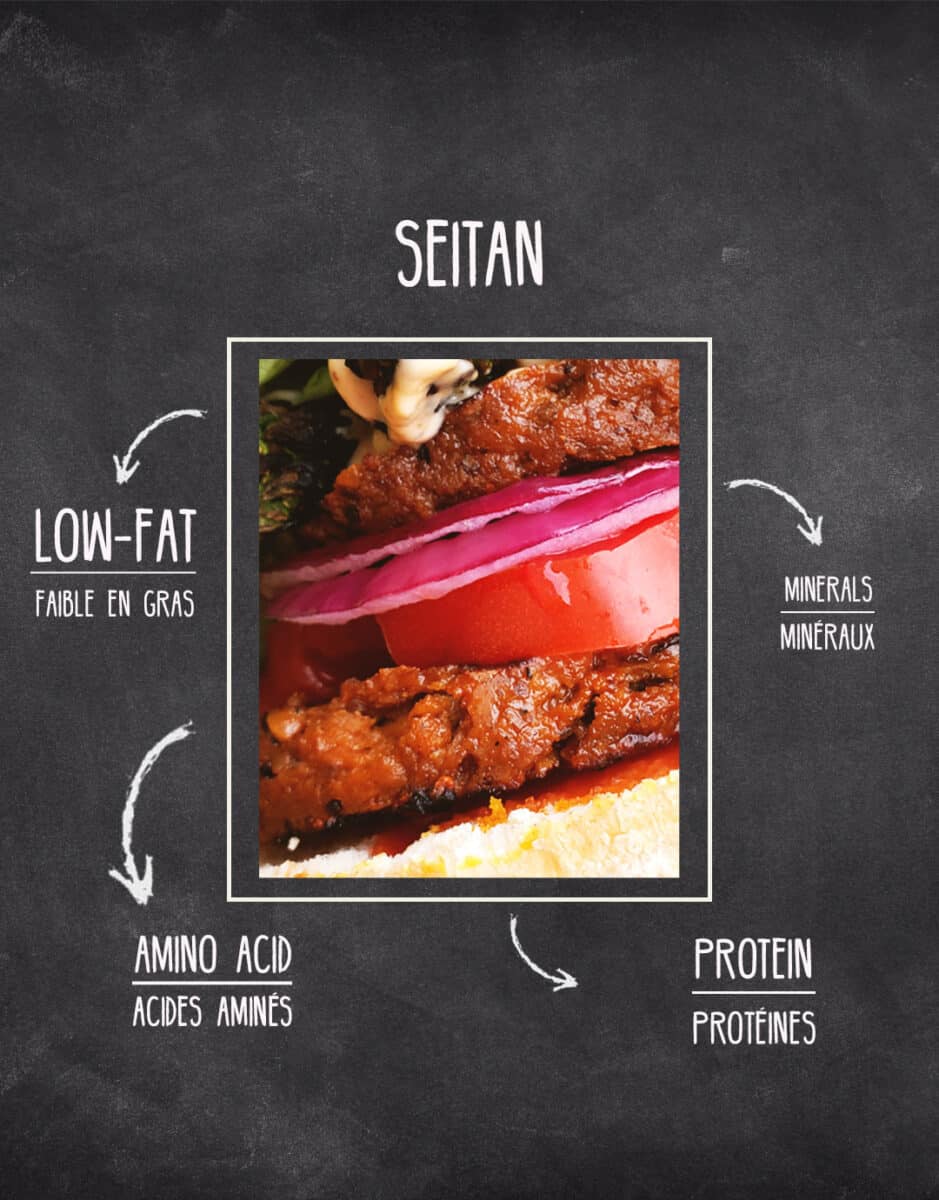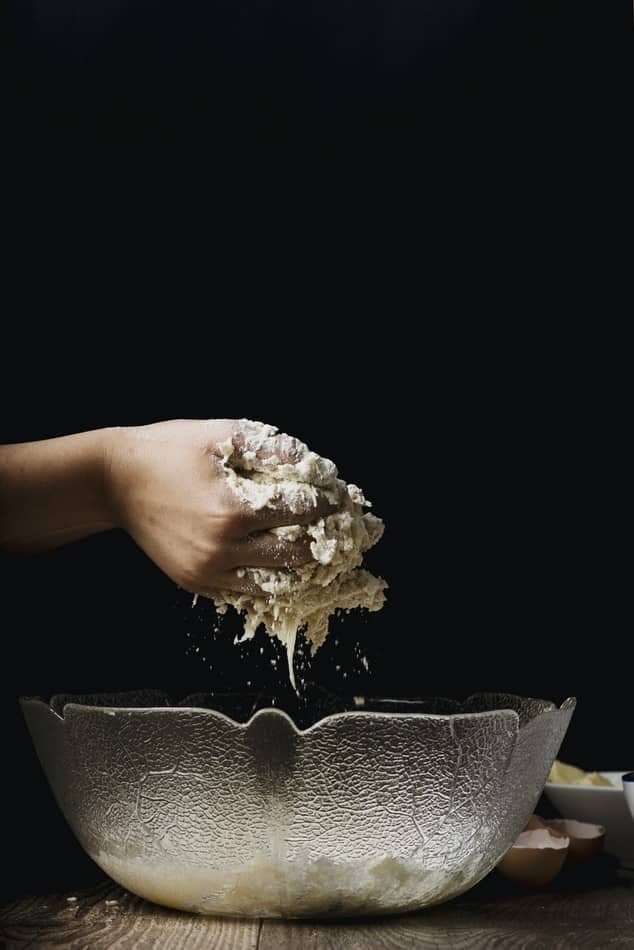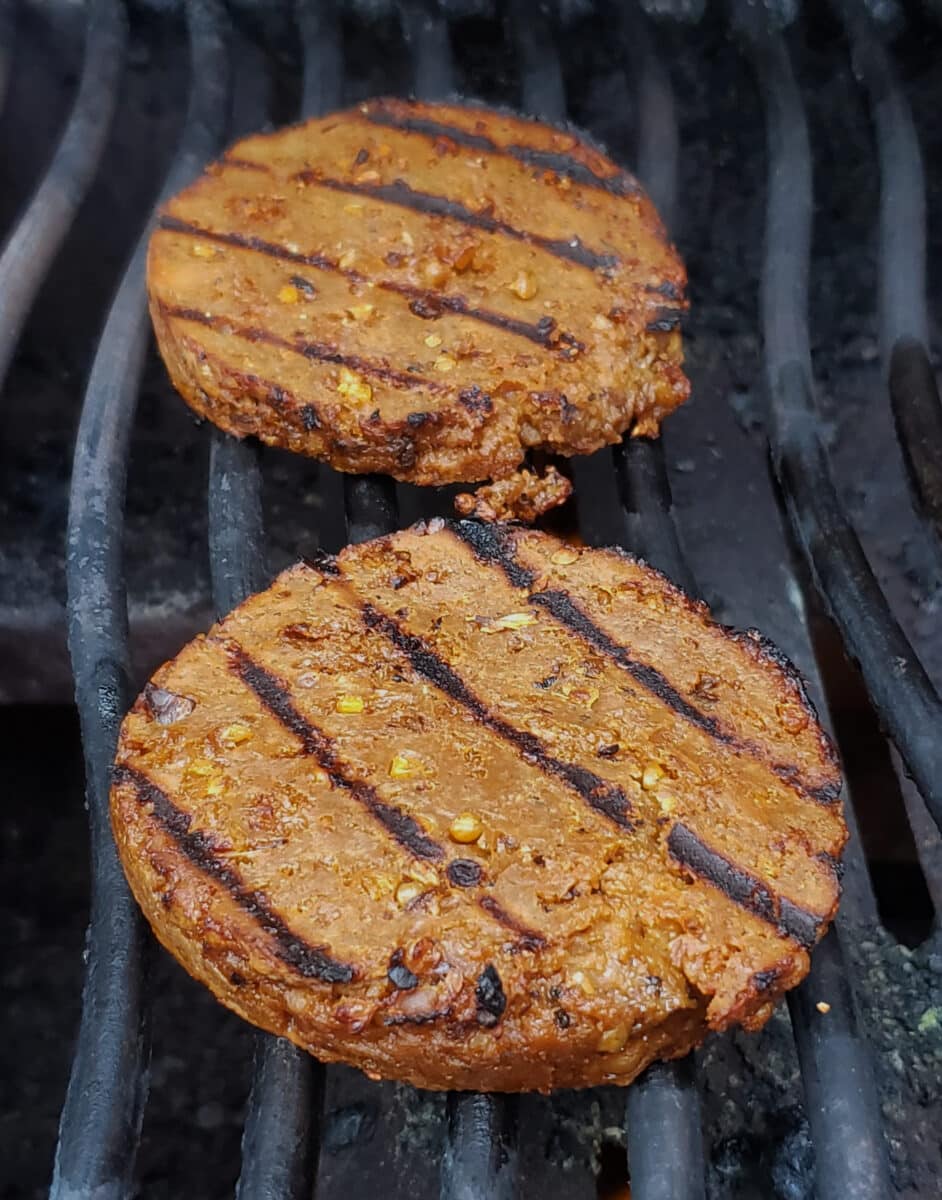17 February 2021
Seitan
Have you ever heard about Seitan?
Seitan is a commun and essential food in the vegan world. It is also a favourite high protein ingredient of GUSTA’ s product line.
Let’s test your “Seitanist” knowledge with the following quiz:
1- What exactly is seitan?
Seitan is made from the protein of wheat also called wheat gluten. Wheat gluten is made up of four main elements:
- The wheat husk or bran.
- Wheat gluten (or seitan) is where the majority of protein comes from.
- Mealy albumen is a type of supply tissue where the starch comes from.
- The germ.

Wheat gluten is composed of many proteins, which are insoluble in water. Gluten refers to the proteins in cereal grains, such as wheat, barley and spelt. By the way, if you are curious, it is not difficult to make your own seitan: take a cup of wheat flour. Then, make a dough ball and put it in a strainer. Finally rinse it well under cold running water. You will obtain a grayish elastic dough. This is seitan!
But to be honest, seitan is bland without spices. We, vegans, are more often used to cooking with flavoured seitans. This is where GUSTA is able to obtain these perfect flavourful recipes. We have our own secret spice blends which allow us to offer our tasty and delicious products.

2- Do you know the origin of the word seitan?
Let’s talk a little about its history: Seitan a.k.a “wheat gluten” was discovered in Asia more than 1,000 years ago, used by Buddhist vegetarians. It became popular in Chinese and Japanese food.
The word “seitan” was coined in the 60’s in Japan by Georges Ohsawa, founder of the macrobiotic diet.
Quick note: According to Georges Ohsawa, the macrobiotic diet would be the perfect balance between yin and yang in our food. The food would produce energetic charges. Of course, this theory is older and appears in the writings of Hippocrates: “Let Food Be Your Medicine”.
The literal meaning of seitan is «made from proteins» (as noted in our previous explanation). In case you are wondering, the exacte pronunciation is: “say-tan”.
Now that you know the origin of seitan, we can move on to question number 3 and its nutritional facts.
3- We’ve heard a lot about the nutritional benefits of seitan. Do you know what there are?
- Seitan is one of the richest proteins of vegan foods. That is why in English its referred to as « wheatmeat ».
A 100g of cooked seitan equals about 25 to 30g of proteins.
A 100g of Tofu has only about 8 to 12 g of proteins.
Also in comparison to 100g of meat, it has about 15 to 20g of proteins.
This is a great advantage, wouldn’t you agree?
- Seitan is a good source of amino acid. It contains approximately all essential amino acids, almost 4 times than that of tofu. Which is excellent for your body!
Did you know that essential amino acids cannot be synthesized by the body? As a result, they must be delivered by food. There are 9 essential amino acids which are: histidine (which is essential during pregnancy and youth): isoleucine, leucine, lysine, methionine, phenylalanine, threonine, tryptophan, and valine.
- Seitan is a low-fat product. It’s a perfect substitute for meat. However, seitan is low in fibre.
- Seitan has plenty of minerals such as calcium, magnesium, iron and phosphorus.

4- How to make Homemade seitan?
Like tofu, it is easy to prepare your own homemade seitan but the perfect recipe requires some skill and effort.
First of all seitan is made from wheat flour. In order to make seitan, you have to carefully add water to the flour in order to remove starch, bran and other water soluble proteins.
Once properly “washed” you should obtain a gray elastic paste, which is insoluble in water. This is the gluten! Cooked, this paste will become regular unflavoured seitan. Now, as we said before, bland seitan is not very palatable. We recommend adding spices and vegetables before cooking.
And like all good things, it will take time to perfect your recipe.
5- Do you know that there are many ways in which to cook seitan?
Seitan is very diverse and prepared using a variety of methods and recipes.
GUSTA knows this well. All of our sausages and roasts are made from seitan.
It is through this many years of research and passion that GUSTA has acquired its own secret recipes.
The result? Is a marvelous range of delicious products with a unique texture and consistency for that perfect moment.
This is why, in order to promote our products we always make sure to provide you with a large range of recipes showcasing their versatility:
- In thin slices: Pita kebab – https://gustafoods.com/en/recipes/recipes-snooper/pita-kebab/
- Steak: KLT burger – https://gustafoods.com/en/recipes/klt-kebab-lettuce-tomato/
- In cube: Crazy spinach – https://gustafoods.com/en/recipes/crazy-spinach/
- Minced: Lasagna, nachos or even mango salsa sopes.
What did you think? We hope that this was helpful in discovering the true secret of seitan and its preparation.
